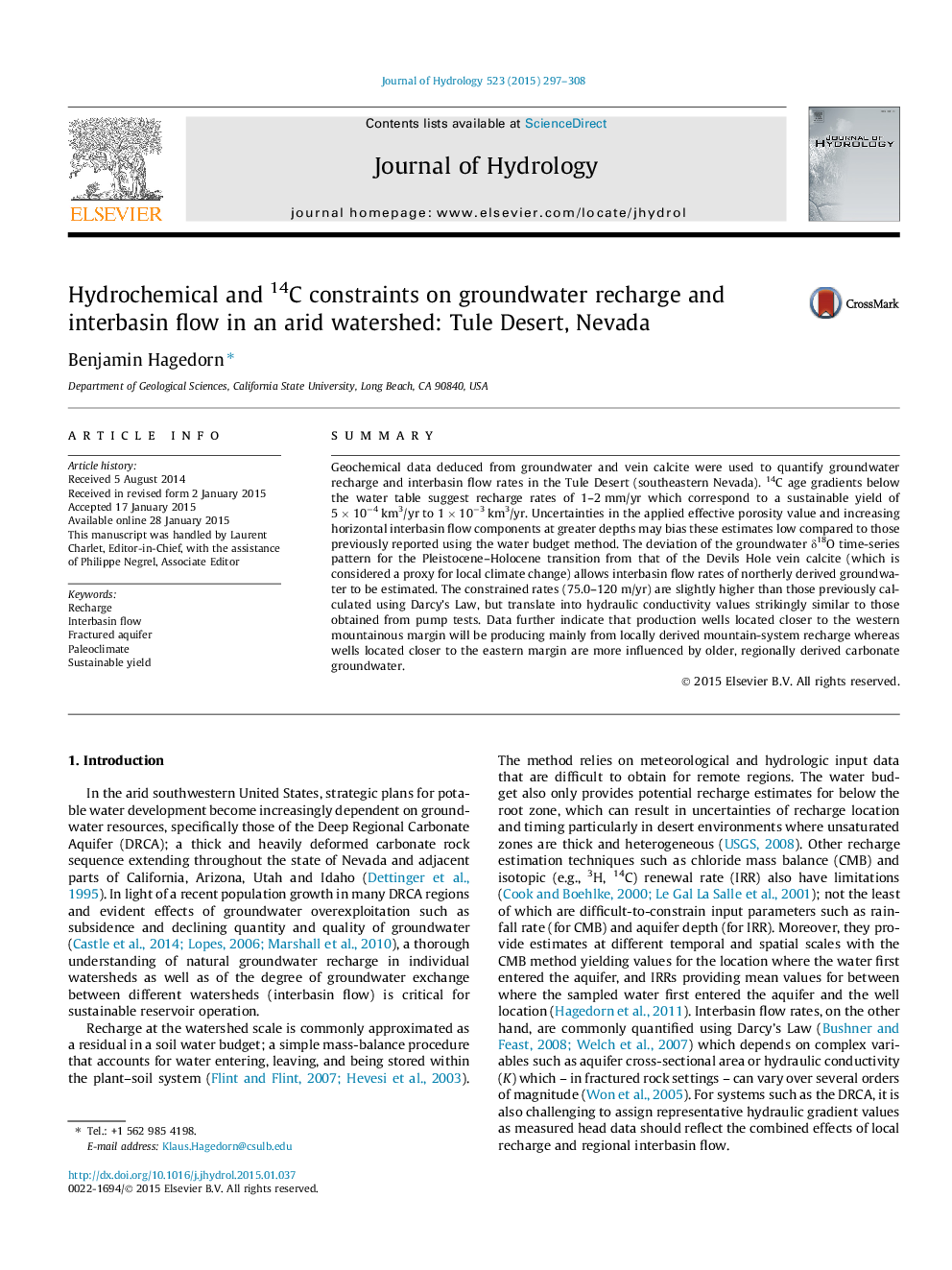| Article ID | Journal | Published Year | Pages | File Type |
|---|---|---|---|---|
| 6411690 | Journal of Hydrology | 2015 | 12 Pages |
â¢Development of conceptual model of groundwater flow in remote desert watershed.â¢Quantification of groundwater recharge based on 14C age vs. depth profiles.â¢Quantification of interbasin flow based on 14C age vs. δ18O time-series patterns.
SummaryGeochemical data deduced from groundwater and vein calcite were used to quantify groundwater recharge and interbasin flow rates in the Tule Desert (southeastern Nevada). 14C age gradients below the water table suggest recharge rates of 1-2 mm/yr which correspond to a sustainable yield of 5 Ã 10â4 km3/yr to 1 Ã 10â3 km3/yr. Uncertainties in the applied effective porosity value and increasing horizontal interbasin flow components at greater depths may bias these estimates low compared to those previously reported using the water budget method. The deviation of the groundwater δ18O time-series pattern for the Pleistocene-Holocene transition from that of the Devils Hole vein calcite (which is considered a proxy for local climate change) allows interbasin flow rates of northerly derived groundwater to be estimated. The constrained rates (75.0-120 m/yr) are slightly higher than those previously calculated using Darcy's Law, but translate into hydraulic conductivity values strikingly similar to those obtained from pump tests. Data further indicate that production wells located closer to the western mountainous margin will be producing mainly from locally derived mountain-system recharge whereas wells located closer to the eastern margin are more influenced by older, regionally derived carbonate groundwater.
